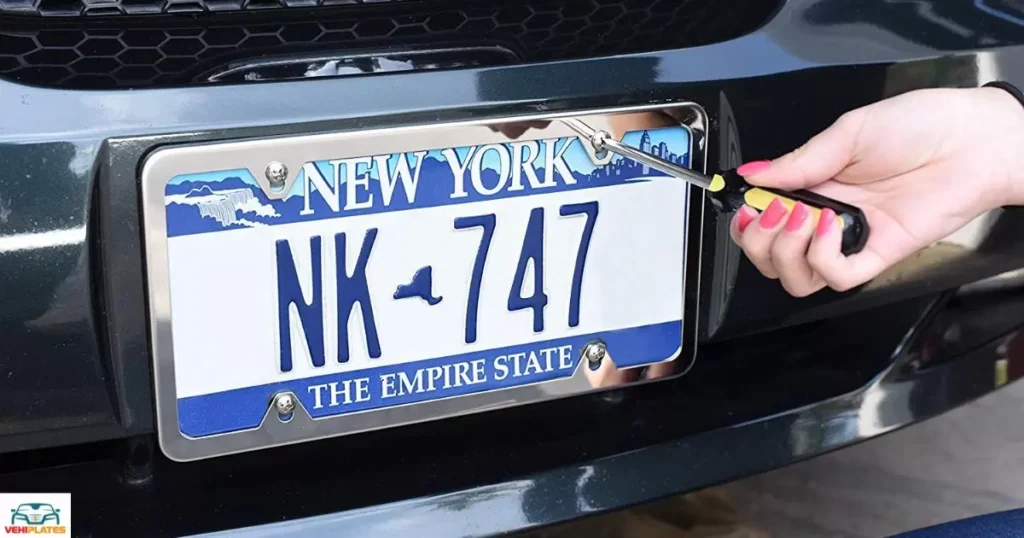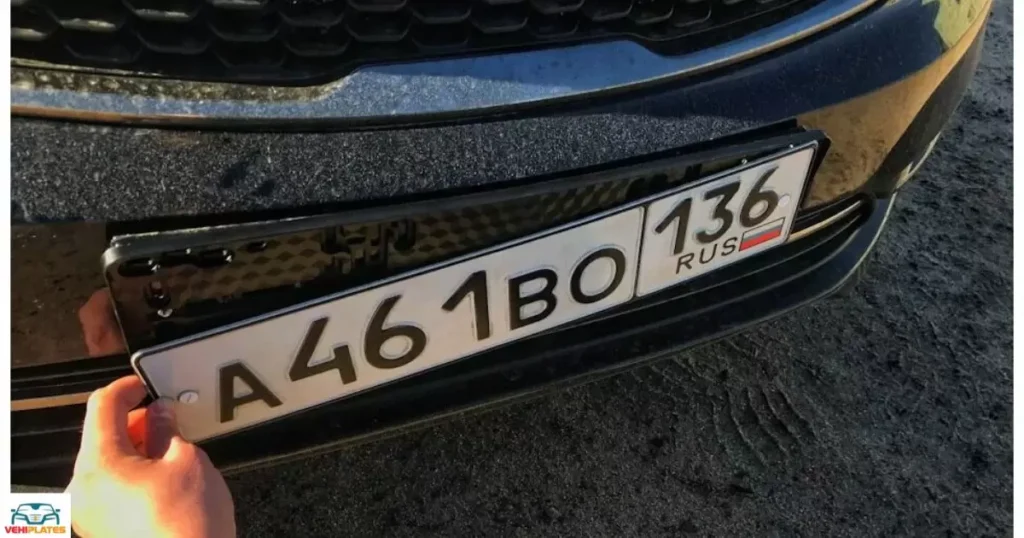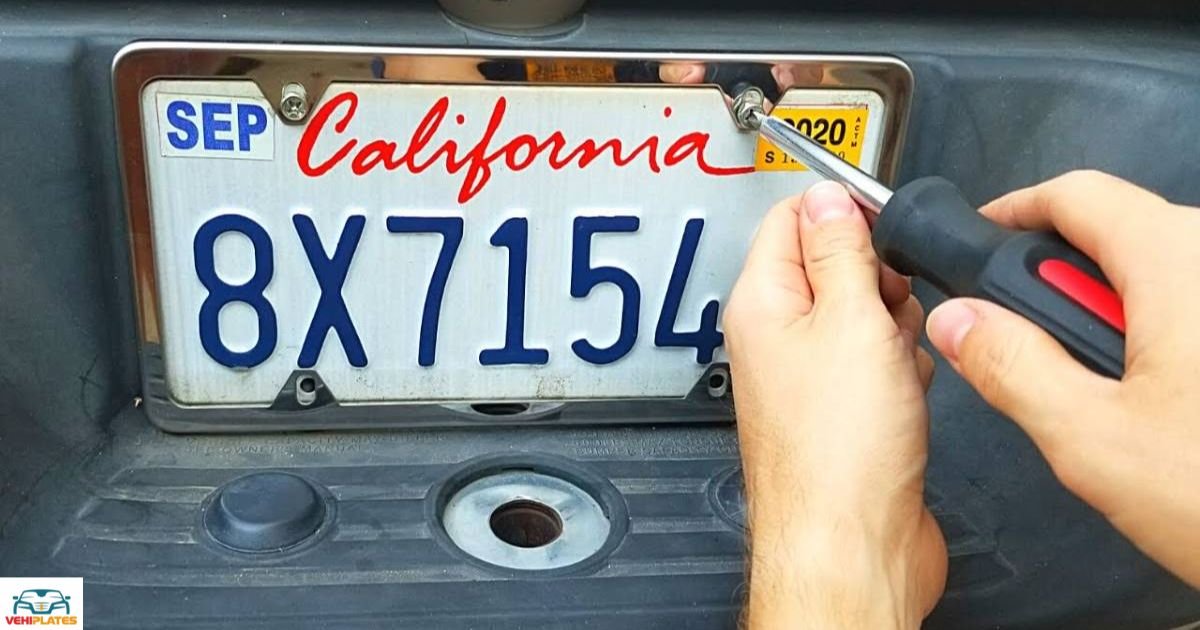License plate screws can be notoriously stubborn, especially if they’ve been exposed to the elements for a long time or if they’ve been over-tightened.
Whether you’re replacing your license plate, upgrading your vehicle, or simply need to access something behind it, dealing with stuck screws can be frustrating. There are several methods and tools you can use to tackle this problem effectively.
Understanding the Problem
Before diving into solutions, it’s helpful to understand why license plate screws get stuck in the first place. Common reasons include:
Rust and Corrosion: Exposure to moisture and road salt can cause metal screws to rust and corrode over time, making them difficult to remove.
Over-tightening: Screws that have been tightened excessively can become jammed in place, making them resistant to traditional removal methods.
Thread Locking Compounds: Some screws may have been installed with thread locking compounds to prevent them from loosening over time, adding an extra layer of difficulty when trying to remove them.
Preparation
Before attempting to remove stuck license plate screws, gather the necessary tools and materials:
Penetrating Oil: WD-40 or similar penetrating oils can help loosen rusted and corroded screws.
Heat Source: A heat gun or a hairdryer can be used to apply heat to the screw, expanding the metal and making it easier to remove.
Screwdriver or Drill: Depending on the severity of the situation, you may need a manual or power drill with appropriate screwdriver bits.
Safety Gear: Wear gloves and eye protection to protect yourself during the process.
Methods for Removing Stuck License Plate Screws

Penetrating Oil Method
Apply Penetrating Oil: Spray penetrating oil generously on the stuck screws and allow it to penetrate for at least 15-20 minutes.
Attempt Removal: Use a screwdriver to try and loosen the screws. Apply steady pressure while turning counterclockwise. If the screws don’t budge, try tapping the screw head lightly with a hammer to help break up any corrosion.
Repeat if Necessary: If the screws remain stuck, reapply penetrating oil and repeat the process until they loosen.
Heat Method
Apply Heat: Use a heat gun or a hairdryer to apply heat directly to the stuck screws for 1-2 minutes. Be cautious not to overheat the surrounding area, especially if there are plastic components nearby.
Attempt Removal: Once the metal has expanded due to the heat, use a screwdriver to try and remove the screws while they’re still warm.
Use Caution: Be careful when applying heat, especially near painted surfaces, as excessive heat can cause damage.
Impact Driver Method
| Impact Driver Method |
| Applies sudden rotational force |
| Helps break stuck screws loose |
| Requires appropriate screwdriver bit |
| Avoids stripping screw heads |
Using an impact driver can significantly ease the process of removing stuck screws by delivering strong, sudden blows that break up corrosion and loosen the screws effectively.
Drill-Out Method
Drill Pilot Holes: If all else fails, use a drill to create pilot holes in the center of the stuck screws. Start with a small drill bit and gradually increase the size until you’ve drilled through the screw head.
Remove the Screw: Once the screw heads have been drilled out, use pliers or a screw extractor tool to remove the remaining screw shaft from the mounting surface.
Repair: After removing the stuck screws, you may need to repair the mounting surface before installing new screws or a new license plate. By the way, have you ever wondered, ‘How many Florida license plates are there?’
Tips for Success

Patience is Key: Removing stuck screws can be a time-consuming process, especially if they’re heavily rusted or corroded. Take your time and avoid applying excessive force, which can lead to stripped screw heads or damaged mounting surfaces.
Use the Right Tools: Ensure you have the appropriate tools for the job, including penetrating oil, screwdrivers, impact drivers, and drills. Using the wrong tools can make the problem worse.
Protect Surrounding Surfaces: When applying penetrating oil or heat, be mindful of surrounding surfaces, especially if they’re sensitive to heat or chemicals. Use masking tape or protective barriers as needed.
Consider Professional Help: If you’re unable to remove stuck screws despite your best efforts, seek assistance. Consider reaching out to a professional mechanic or automotive technician. They have specialized tools and expertise to tackle stubborn fasteners safely.
FAQ’s
How can I tell if my license plate screws are stuck?
If you’re having difficulty turning them with a screwdriver, they’re likely stuck. Also, if they show signs of rust and corrosion, they’re likely stuck too.
Is it safe to use excessive force to remove stuck screws?
Using too much force can strip the screw heads or damage the mounting surface, so it’s best to avoid it.
Can I use regular oil instead of penetrating oil?
Regular oil can provide some lubrication. Penetrating oil is designed to break through rust and corrosion, making it more effective for this task.
Conclusion
Dealing with stuck license plate screws can be a frustrating ordeal, but with the right approach and tools, it’s a challenge that can be overcome. Whether you opt for penetrating oil, heat, impact drivers, or drilling, patience and perseverance are essential.
You can successfully remove stubborn screws by understanding the underlying causes of stuck screws. Employing appropriate removal techniques will help you complete your automotive tasks with ease.










